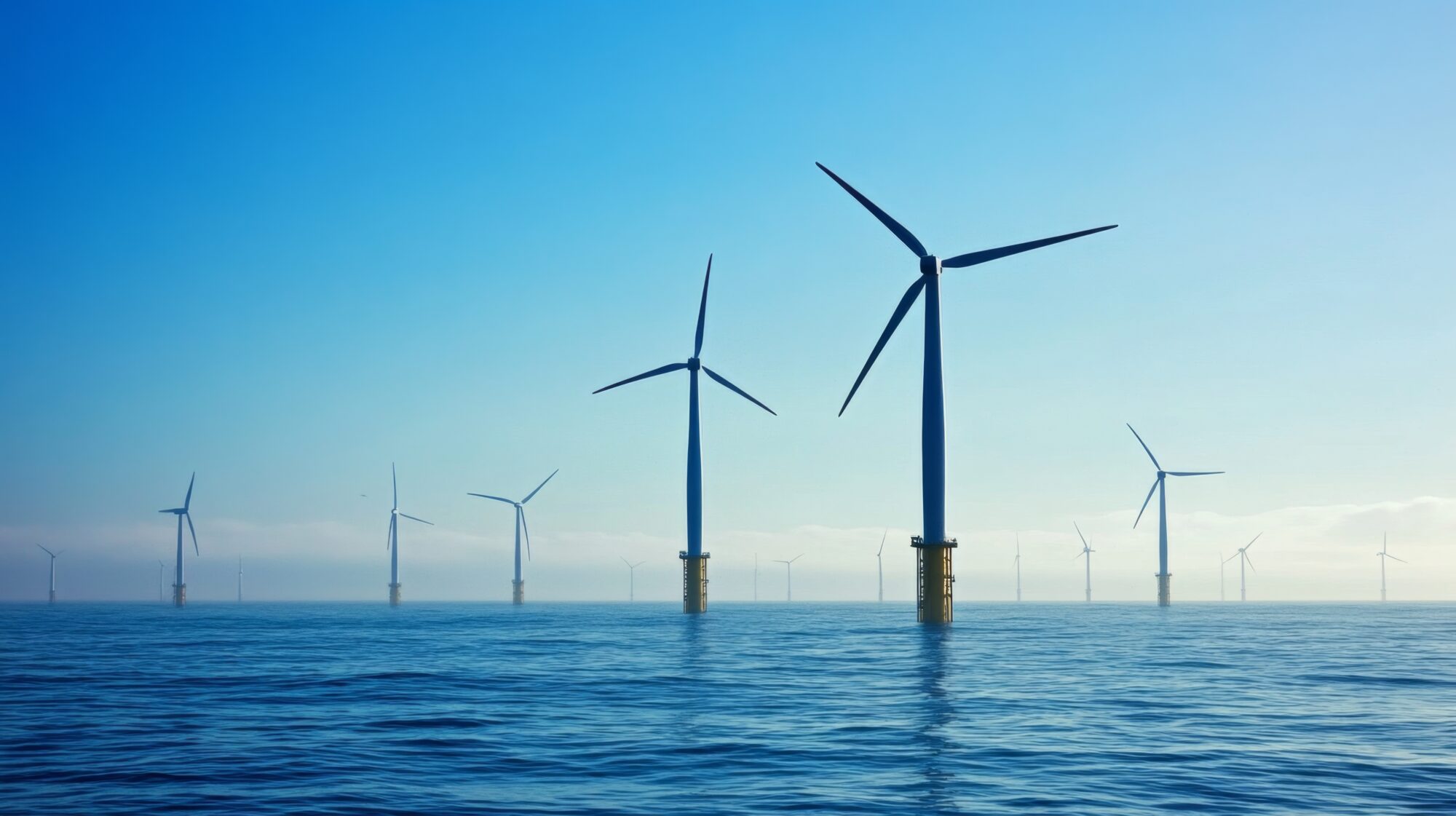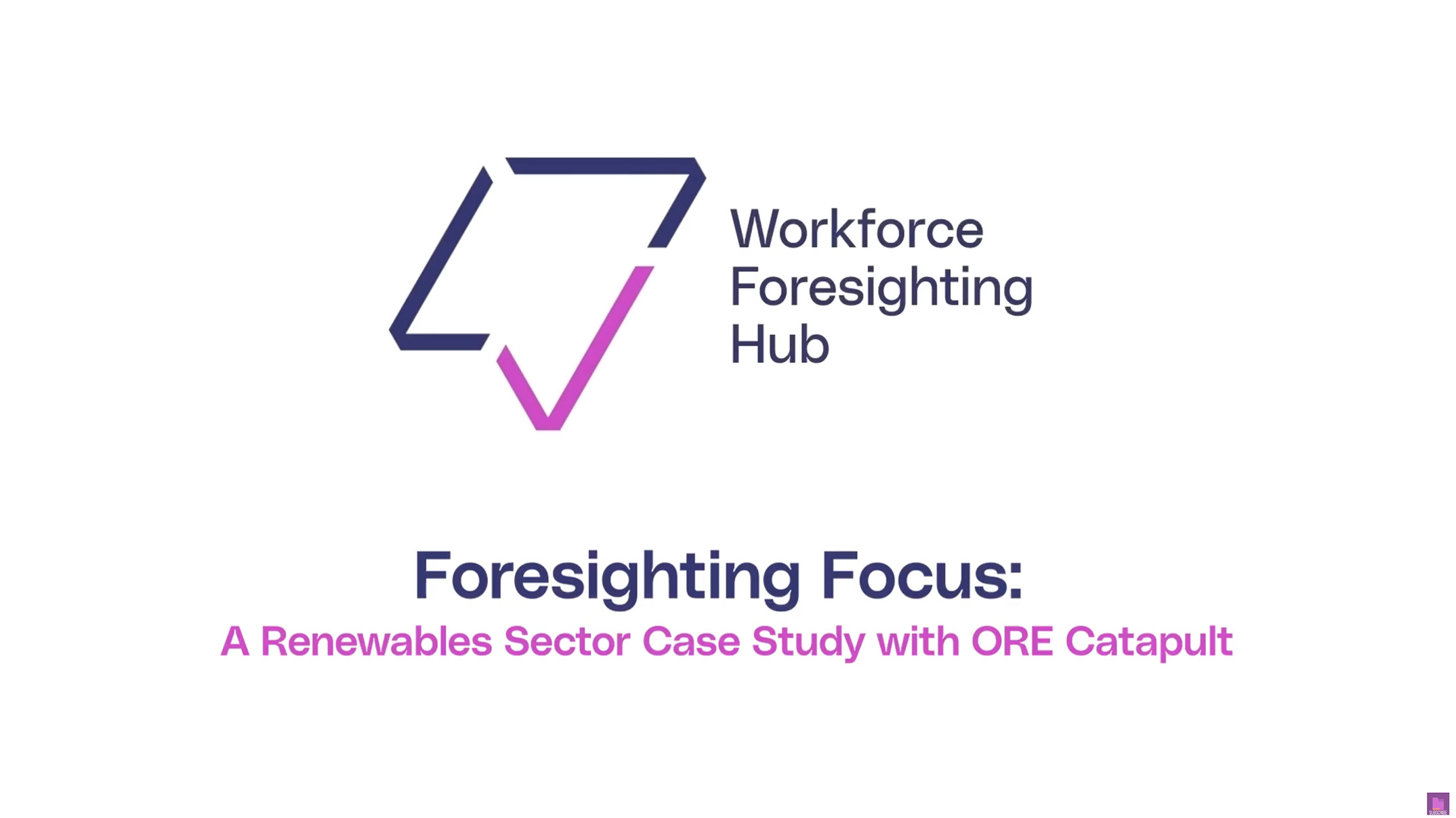Offshore renewable energy catapult drives action through workforce foresighting
The offshore wind sector is vital to the UK’s transition to Net Zero. With a national target of quadrupling offshore wind power by 2030, the sector faces the urgent need to expand its workforce. This growing demand for skilled workers cannot be met without a concerted, proactive effort to address the current skills gap.

The UK government’s commitment to offshore wind is clear, but it is equally important to ensure that the workforce is equipped with the necessary skills to meet the ambitious targets. The Offshore Renewable Energy (ORE) Catapult is leading the charge in translating foresighting data generated from its insight reports into actionable solutions, that really can shape the future of the offshore wind industry.
Last year ORE Catapult published two key foresighting reports:
A strategic approach to future skills
Last year, ORE Catapult carried out a critical report as part of the Workforce Foresighting Hub initiative, and identified future workforce capabilities required to deliver the UK’s offshore wind targets. This report built upon earlier findings by Renewable UK’s Skills Intelligence Report, published in 2023, highlighting the need for 72,000 new skilled workers in the sector by 2030, spanning critical roles, including engineers, electricians, and maintenance experts. The findings emphasised the current gaps in high-level technical skills, particularly in areas such as electrical engineering, high voltage systems and cable technology.
Andrew Esson, Future Skills Lead at ORE Catapult, explains the importance of foresighting in this context: “Workforce foresighting enables forensic investigation into what specific skills are required and what capabilities will underpin the new job roles. Without it, we risk not meeting our 2030 targets, which would jeopardise the UK’s energy strategy and broader Net Zero ambitions.”
What makes this report crucial is that it moves beyond theoretical forecasting. The Workforce Foresighting Hub’s approach is to identify, develop, and implement tangible strategies that address the evolving needs of the sector. Rather than merely pointing out what’s lacking, it provides a roadmap for action, helping industry leaders to bridge these gaps and ensure that the workforce is ready for the challenges ahead.
Turning insight into action
ORE Catapult’s work in this area goes beyond identifying gaps and focusses on actionable solutions. One of the key strategies aligns education and training programmes with the specific needs of the industry. For example, the dynamic cables and high voltage systems used in floating offshore wind provide unique challenges. These technologies require specialised training programmes to provide the skills necessary to design, install, and maintain these systems.
In addition, ORE Catapult’s Inter array dynamic cabling cycle is already having a tangible impact on those within the education and industry sectors, including:
- Working with Newcastle University on the development of a HV dynamic cable systems module / pathway in a degree apprenticeship.
- Working with OPITO to develop a new high voltage competency standard and collaborating with a commercial training provider to deliver highly vocational high voltage training.
- Investigating opportunities for ORE Catapult to leverage its technology development resources to inspire, educate, and train the current and future offshore wind workforce in HV electrical technology, including HV dynamic cables.
- Using foresighting findings to help develop a new suite of HV electrical engineering professional courses for the offshore wind sector.
- Working with sector bodies to identify robust and sensible methodologies to connect workforce foresighting with workforce forecasting. This will help to understand future labour market needs and enable appropriate action to be taken in developing education and training programmes.
Emily Brennan, Workforce Foresighting Hub, explains that part of the foresighting process involves ensuring that training providers and educational institutions are aligned with industry needs.
“By helping to create and implement training programmes that are directly linked to the findings from the report, we can begin to fill the gaps in skills development. This is a key part of ensuring that the next generation of workers are ready to take on the tasks that will be central to meeting our 2030 offshore wind targets.”
ORE Catapult is also working closely with employers across the offshore wind sector to help them re-skill and cross-skill existing workers. A detailed insight report, developed in 2024, highlights the importance of attracting workers from other sectors, such as oil and gas, or manufacturing. These sectors share relevant skills but may need people to be retrained for the specific needs of offshore wind.
This effort aligns with the UK’s broader industrial strategy, which emphasises the importance of a flexible, highly skilled workforce capable of meeting the demands of emerging industries.
Aligning with industrial priorities
ORE Catapult’s efforts complement the UK Government’s industrial strategy, which seeks to boost productivity, drive innovation, and ensure that the workforce is prepared for the future. Offshore wind plays a key role in this, especially given its potential to generate thousands of jobs, attract investment, and drive innovation. The skills report produced by ORE Catapult last year addresses the critical need for a workforce that can support these growth ambitions, helping to align the workforce development initiatives with the UK’s industrial priorities.
The workforce foresighting process offers a forward-thinking approach to tackling the skills shortage in offshore wind by identifying specific challenges, such as the need for expertise in floating wind technologies, cable systems and dynamic inter-array systems, and outlining clear steps to address them. This includes the creation of new job profiles, updating training and education curriculums and improving recruitment strategies to attract the right talent.
The report’s recommendations help address the broader challenge of creating a sustainable energy workforce in the UK. By equipping the workforce with the right skills, ORE Catapult’s actions support outlined strategic priorities and help ensure that the offshore wind sector remains competitive on the global stage.
Building a talent pipeline
The scale of the skills challenge in offshore wind should not be underestimated. To meet the growing demand for skilled workers, ORE Catapult is working with a wide range of stakeholders, including government bodies, educational institutions and industry leaders. All of the reports developed through this work highlight the need for a collaborative approach to achieve this, bringing together expertise from across sectors to create a robust pipeline of talent.
A sustainable future
As the UK moves closer to its 2030 offshore wind targets, the collaboration between ORE Catapult, RenewableUK and other key stakeholders will be essential in ensuring that the workforce is ready to support this transformative sector.
By turning foresighting into action, ORE Catapult is already helping to build a sustainable, skilled workforce that will not only meet the energy needs of today but also power the UK’s Net Zero future for years to come.
Related programme

Workforce Foresighting
How do we build a skilled workforce for tomorrow’s industries? The Workforce Foresighting Hub has developed a structured process, aligned with national policy, to help deliver a workforce to exploit innovative technologies in the UK. We’re supporting industry, policymakers and educators to adapt to continuing change.


